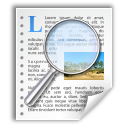Free readability tools to check for Reading Levels, Reading Assessment, and Reading Grade Levels.
[ HOME ] Check Your Readability: Check Text Readability NOW  Free Readability Calculators Learn about Readability Formulas: Dale-Chall Formula Flesch Reading Formula The Fry Graph SPACHE Formula [ View All ] Readability Help: [ View All Articles] Writing Tips: [ View All Articles] English Writing Products: StyleWriter software Site Map About Us Contact Us Write for Us |
How to Write Better Internet Marketing Articles Writing and submitting articles is an effective marketing ploy to deliver targeted visitors to your website, raise your search engine rankings, and increase sales of your products or sales. The basics of writing an article are much the same, no matter where you use it. You should write it to make the best use of keywords without being obvious. Readers want useful information so don't write a commercial. Gradually you can steer your readers towards your services or products.
This checklist will help you expel common problems in writing articles and improve your writing: 1. Have a specific purpose in mind. One of the biggest hurdles most new writers face is finding ideas to write about. The easiest way to begin is to write on a topic that interests and excites you. Always have a specific purpose in mind before you begin writing: you should know what you want to accomplish by writing your article. Are you writing an article to clarify an issue for your customers, to attract prospects, to improve the link popularity for your website? 2. Narrow your topic. Once you have decided on a general area, a good way to narrow down the topic is to focus on the problems that your readers have. Typically, people read articles because they want to be entertained or they want information. Writing entertaining articles is more difficult. However, writing informative articles can be as simple as sharing tips. A guiding principle is to expect readers to be looking for, "What's in it for me?" 2. Know your target audience. Before writing an article, research your target audience. What are their experiences, their interests, and their wants in the chosen topic? What pain or problem do they try to avoid? 3. Develop a detailed outline first, stressing the benefits. Now that you have a purpose and a target, organize your article so scanning it quickly will show immediately to your reader how he will benefit from it and what are the most important points. 4. Create a title to stop your reader in his tracks. Your title should grab the reader's attention and force him to read your first paragraph. Using your most important benefit usually does it. 5. Start your article with the most important
information. Again, do not keep your most important information for the conclusion. Give it immediately and use the following paragraphs to develop it. 6. Keep jargon to a minimum. If possible, avoid jargon as well as prejudices and insinuations. Write your article so even a child can understand it. 7. Make your article warm and personal. Speak direct to the reader. Use a lot of "you." Reading your article, the reader should feel warmth and empathy, knowing that you have the same problems and goals. 8. Keep sentences short and simple. Using short and simple sentences will allow a fluid and easy reading, preventing your reader from becoming bored. Most people don't like to read large documents from the Web; unlike long essays, articles should be around 400 words long. If you break the article into an introduction, a few sub-headings and a conclusion you may only have to write about 50 words in each section. Use a free readability formula tester at www.ReadabilityFormulas.com to determine the reading level of your text. 9. Have someone from the target audience critique your article. Who can give you better feedback than someone from your target audience? It will help you 10. Spend more time rewriting than writing. Besides formatting your article for easy reading and presentation, be sure to use tools or an external editor to proofread your writing for grammatical and spelling errors. Use an English grammar checke to correct embarrassing writing and grammar errors. Once you have written your article you may want to add it to your own website as a piece of original content. If you add an "About the Author" section with a link to your website, you can also submit it to article directories. As other websites publish your article, search engines create invaluable one-way back links to your website, increasing its popularity. Article submission can be a tedious process, but software and websites that submit to multiple directories will make the job much easier. About Readability >> READABILITY FORMULAS New Dale-Chall - Flesch Reading Ease - Flesch Grade Level - Fry Graph -Gunning FOG - Powers-Sumner- Kearl - SMOG - FORCAST - Spache  StyleWriter software: use it to write better content! Download your free trial! |
|
|
||